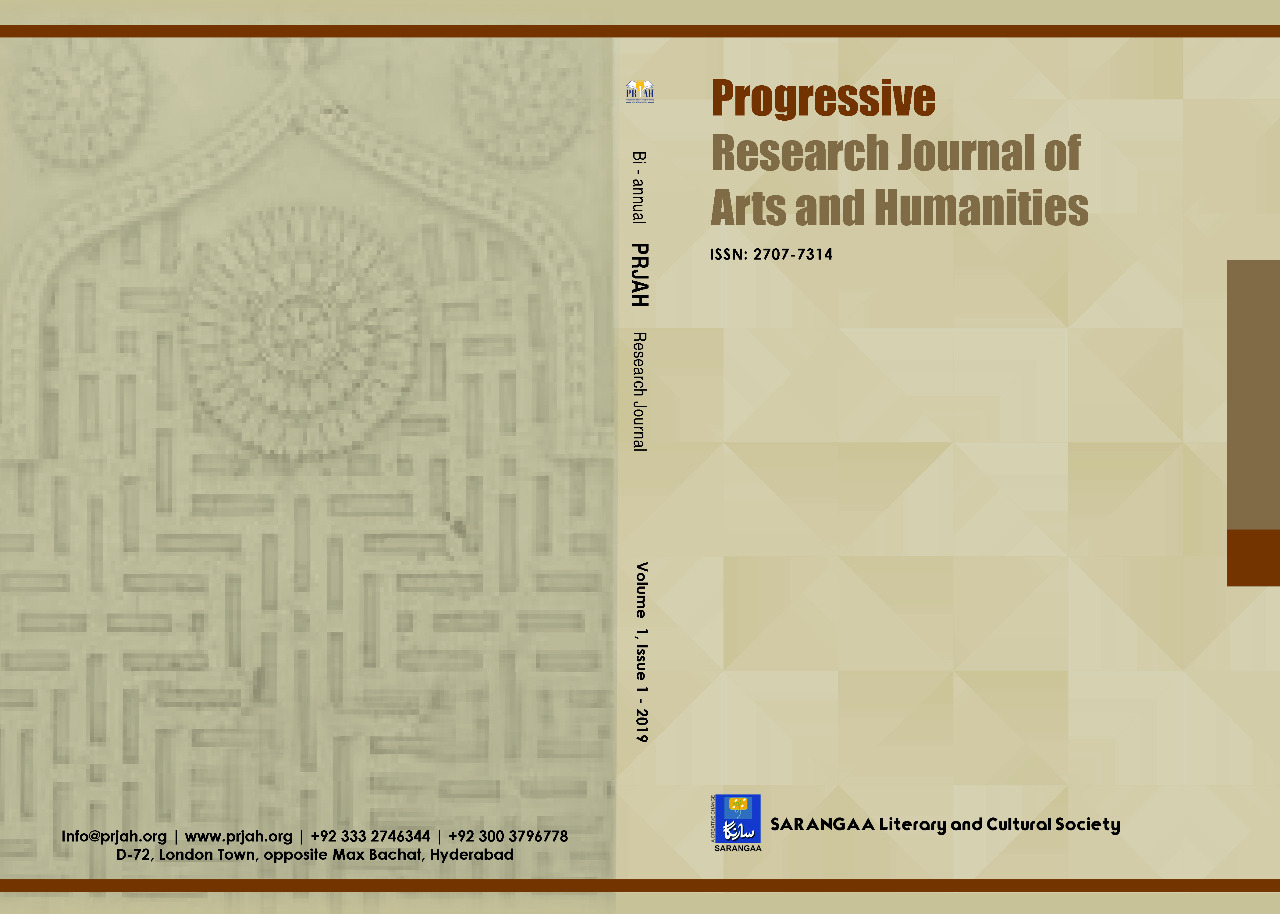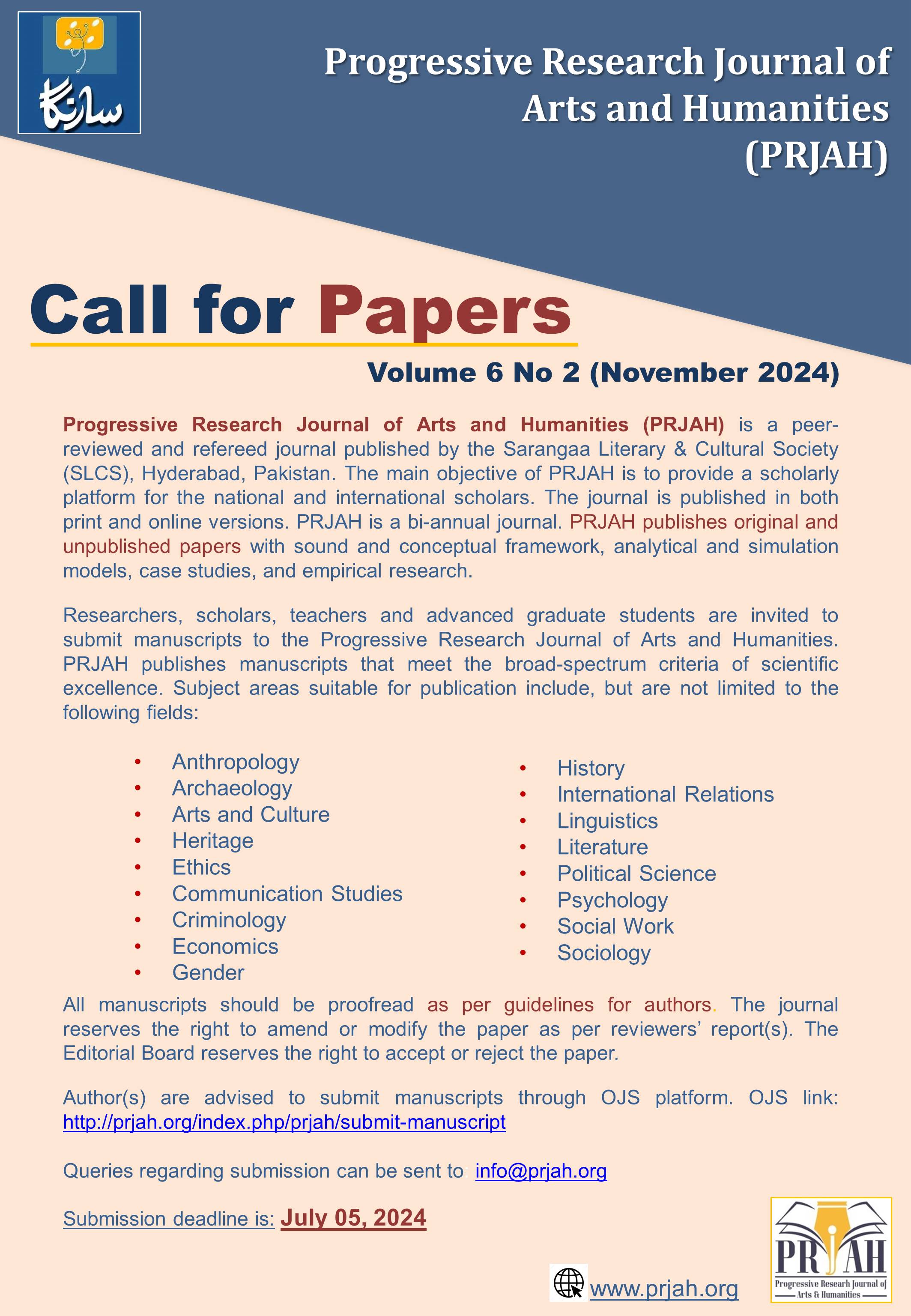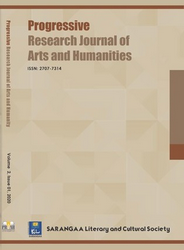Peasant and Class Struggles:
The Case of Sindh Hari Committee and the Communist Party of Pakistan
DOI:
https://doi.org/10.51872/prjah.vol6.Iss2.313Keywords:
Sindh Hari Committee, Communist Party of Pakistan, Class & Peasant Struggles, Socialism, CommunismAbstract
The 20th century witnessed a series of socialist and communist revolutions that sparked hope among the masses worldwide. The Russian Revolution, famously known as the October Revolution under the leadership of Lenin in 1917, was the first socialist revolution in the world. This event ignited leftist movements across the globe. India was under British control during the revolutionary movements in Russia that led to the October Revolution. However, the post-October revolution inspired some political parties in India to launch movements aimed at bringing about a socialist revolution. Prior to the partition of India, the Sindh Hari Committee (Sindh Peasants Committee) was established in 1930 to rally peasants and fight for their rights from the feudal system. They advocated for the fair distribution of land among landless peasants in Sindh, while following communist principles. Following the partition, the Communist Party of Pakistan (CPP) was formed in 1948. This research primarily delves into the historical events surrounding the efforts of the SHC and CPP in organizing peasants and labourers, respectively. Additionally, the paper addresses the response of the state apparatus to counter communism and, in turn, the reaction of leftist forces to state suppression.
References
Ahmed, I. (2010). The Rise and Fall of the Maoist Movement in Pakistan. ISAS Insights, (102), 1–7.
Ali, K. A. (2015). Surkh Salam: Communist Politics and Class Activism in Pakistan 1947-1972. Karachi: Oxford University Press.
Gianchandani, S. (2010). Sobhy Joon Tahreroon-1 [In English: Sobho's Writings-1]. Hyderabad: Sindhi Sahat Ghar.
Jatoi, D. H. (Ed.). (1995). Baba-e-Sindh Hyder Bux Jatoi: Introduction and Excerpts from His Writings. Hyderabad: Baba-e-Sindh Hyder Bux Jatoi Academy.
Muhammad, Q. F. (2008). Hari Committee aien Allottee Tehrik [In English: Sindh Hari Committee and the Struggle for Land Allotment]. Hyderabad: Sindhi Sahat Ghar.
Naqvi, P. J. (1989). Communist Party of Pakistan me Nazryati Kashamkash ki Mukhtasir Tareek [In English: A Brief History of Ideological Conflicts in the Communist Party of Pakistan]. Karachi: Maktaba-e-Roshan Khayal.
Naqvi, S. J., & Ishtiaq, H. (2014). Leaving Left Behind. Karachi: Pakistan Study Center, University of Karachi.
Qazi, D. A. (2015). Comrade Hyder Bux Jatoi (Sindhi Sarwech). Kandiaro: Roshni Publication.
Sheikh, Z. (2014). What Went Wrong (1st ed.). Karachi: Welcome Book Port.
Solangi, A. H. (2007). Sindh Hari Committee: Tareekh aien Jidojihad (1930-1970). Larkana: Lab-e-Darya Historical Society.
J. Chandio. Personal communication, February 5, 2016
Qazi, I. Personal communication on the phone, March 23, 2016
Sangi, S. Personal communication, January 31, 2016.
Downloads
Published
How to Cite
Issue
Section
License
Copyright (c) 2025 Progressive Research Journal of Arts & Humanities (PRJAH)

This work is licensed under a Creative Commons Attribution 4.0 International License.







